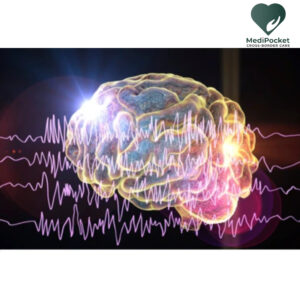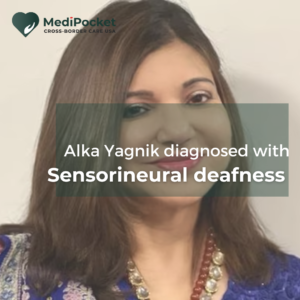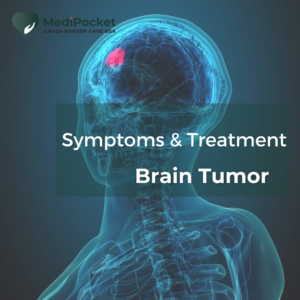There are certain conditions that can impact our brain functioning and its activities. Brain is one of the crucial organs of our body and any kind of rupture and disruption can seriously impact our other body organs and functions. The most common condition that has such effects on our brain is seizure and stroke.
In the following article, we will learn about stroke and seizure, its difference and its effects in our body.
Stroke
A stroke, also known as a cerebrovascular accident (CVA), is a medical emergency that happens when the blood flow to a portion of the brain is stopped or diminished, resulting in the death of brain cells. This can result in long-term brain damage or even death.
Strokes are classified into two types: ischemic and hemorrhagic.
Ischemic stroke
Ischemic stroke occurs when a blood artery in the brain becomes blocked, generally by a blood clot. This kind of stroke is the most frequent, accounting for around 87% of all strokes. Ischemic strokes are further categorised as follows:
- Thrombotic stroke: This happens when a blood clot develops in an artery that provides blood to the brain, generally as a result of fatty deposits (plaques) accumulating in the arteries.
- Embolic stroke: A blood clot or other debris develops elsewhere in the body (such as the heart) and travels to the brain, obstructing a blood artery.
- Stroke with haemorrhage
Hemorrhagic stroke
When a blood artery in the brain ruptures, it causes bleeding into or around the brain, resulting in a hemorrhagic stroke. These conditions are less common than ischemic strokes, they are more severe and carry a higher risk of mortality. Hemorrhagic strokes are further characterised as follows:
- Intracerebral haemorrhage occurs when a blood artery within the brain ruptures, resulting in bleeding within the brain tissue.
- Subarachnoid haemorrhage occurs when a blood artery on the brain’s surface ruptures, causing bleeding into the space between the brain and the skull.
Depending on the location and degree of the brain injury, the condition can have a broad variety of repercussions on the body. Paralysis or weakness on one side of the body, trouble speaking or comprehending language, visual issues, memory loss, and emotional disorders are all common stroke symptoms.
Causes of stroke
Depending on the type of stroke, the reasons might differ.
Ischemic stroke: This is most commonly caused by the formation of a blood clot in an artery that delivers blood to the brain. This can develop as a result of atherosclerosis, a buildup of fatty deposits (plaques) in the arteries, or as a result of other problems that raise the risk of blood clots, such as atrial fibrillation or heart valve issues.
Hemorrhagic stroke: High blood pressure, which can weaken the walls of blood arteries in the brain and make them more prone to rupture, is the most prevalent cause of hemorrhagic stroke. Aneurysms (weak areas in blood vessel walls), arteriovenous malformations (AVMs), and blood diseases that alter circulation are all risk factors for hemorrhagic stroke.
Additional risk factors that might raise your chances of having a stroke include:
- Age: As people become older, their chance of having a stroke rises.
- Gender: Males are more likely than women to suffer a stroke, although women experience strokes at a later age.
- Family history:Individuals who have a family history of stroke are at a higher risk of developing one themselves.
- Race: Black Americans, Hispanic Americans, and Asian Americans are more likely to suffer a stroke than Caucasians.
- Smoking: Tobacco use can damage blood arteries and raise the risk of stroke.
- High blood pressure: The most major risk factor for stroke is high blood pressure.
- High LDL (bad) cholesterol levels can contribute to the development of atherosclerosis, which can lead to stroke.
- Diabetes: Diabetics are at a greater risk of stroke due to blood vessel deterioration and an increased chance of clotting.
- Obesity: Being overweight or obese raises your chance of having a stroke.Physical inactivity can raise the chance of having a stroke.
- Alcohol consumption: Excessive alcohol drinking can raise the chance of having a stroke.
- Illicit drug use: Illegal drug use, notably cocaine and amphetamines, has been linked to an increased risk of stroke.
Seizure
A seizure is an uncontrollable electrical disruption in the brain that can result in changes in behaviour, movements, and awareness. Seizures can be categorised into two categories based on their length and severity: generalised seizures and focused seizures.
Generalised seizure
Generalised seizures are characterised by aberrant electrical activity on both sides of the brain and might result in loss of consciousness. Generalised seizures are classified into numerous subcategories, which include:
- Absence seizures are characterised by short periods of gazing, which are frequently misinterpreted as daydreaming or inattention.
- Tonic-clonic seizures are characterised by bodily rigidity (tonic phase) followed by jerking movements (clonic phase).
- Myoclonic seizures are characterised by abrupt, short muscular spasms.
- Atonic seizures produce an abrupt loss of muscular tone, resulting in falls.
Focal seizures
Focal seizures, also known as partial seizures, are characterised by aberrant electrical activity in a small area of the brain and can result in changes in sensation, movement, or behaviour. Focal seizures are further subdivided into two types:
- These seizures produce changes in sensation, movement, or behaviour yet the person remains awake.
- Focal seizures with reduced consciousness: These seizures are characterised by a loss of awareness or consciousness, as well as alterations in sensation, movement, or behaviour.
Causes of seizures
Seizures can be brought on by a number of circumstances, including:
- Epilepsy: Epilepsy is a neurological condition that causes recurring seizures. A multitude of causes can contribute to it, including heredity, brain damage, or aberrant brain development.
- Brain injury:Traumatic brain injury, stroke, or other types of brain damage can all raise the chance of seizures.
- Brain infections: Brain illnesses, such as meningitis or encephalitis, can result in seizures.
- Metabolic imbalance: Seizures can be triggered by metabolic imbalances such as low blood sugar, low blood salt, or other metabolic abnormalities.
- Drug: Seizures can occur during the detox process from drugs or alcohol.
- Brain tumours: Because of their impact on the brain, brain tumours can induce seizures.
- Genetic disorders: Seizures can be caused by genetic illnesses such as Dravet syndrome and Angelman syndrome.
Difference between stroke and seizure
The following are the primary distinctions between stroke and seizure:
- Causes: Seizures are produced by aberrant electrical activity in the brain, whereas strokes are caused by an interruption in blood flow to the brain.
- Symptoms: The symptoms of a stroke and a seizure are not the same. Typical strokes symptoms include abrupt weakness or numbness on one side of the body, trouble speaking or comprehending speech, visual issues, severe headache, and loss of balance or coordination. Seizure symptoms may include convulsions or jerking movements, staring, disorientation, loss of consciousness, and muscular rigidity, depending on the location and intensity of the seizure.
- Duration: Stroke symptoms can last anywhere from minutes to hours, whereas seizures can last anywhere from a few seconds to several minutes.
- Life-threatening: Strokes can be fatal and need immediate medical treatment, although most seizures are not fatal and can generally be treated with medicine.
- Treatment: Therapy for stroke and seizures differs. Stroke therapy may include clot-busting medicine or surgery, whereas seizure treatment may include medication, lifestyle modifications, or surgery.
As a result, the preceding essay has highlighted the distinct distinctions between strokes and seizure. The condition may appear to be unsuitable for consultation, and individuals may misinterpret it for something different. Everyone should be on the lookout for symptoms and get advice from a neurologist as soon as feasible.
Do you know that folks in India may get a second opinion from someone in the United States? Indeed, that is conceivable in the MediPocket world. Those who are unsure about the condition and want a better understanding should seek a second opinion. That is why MediPocket World is the finest at delivering second opinions to Indians. Best doctors from the best hospitals are with us and aim to provide sustainable healthcare directly from the United States. Register now and book a slot for a second opinion.














